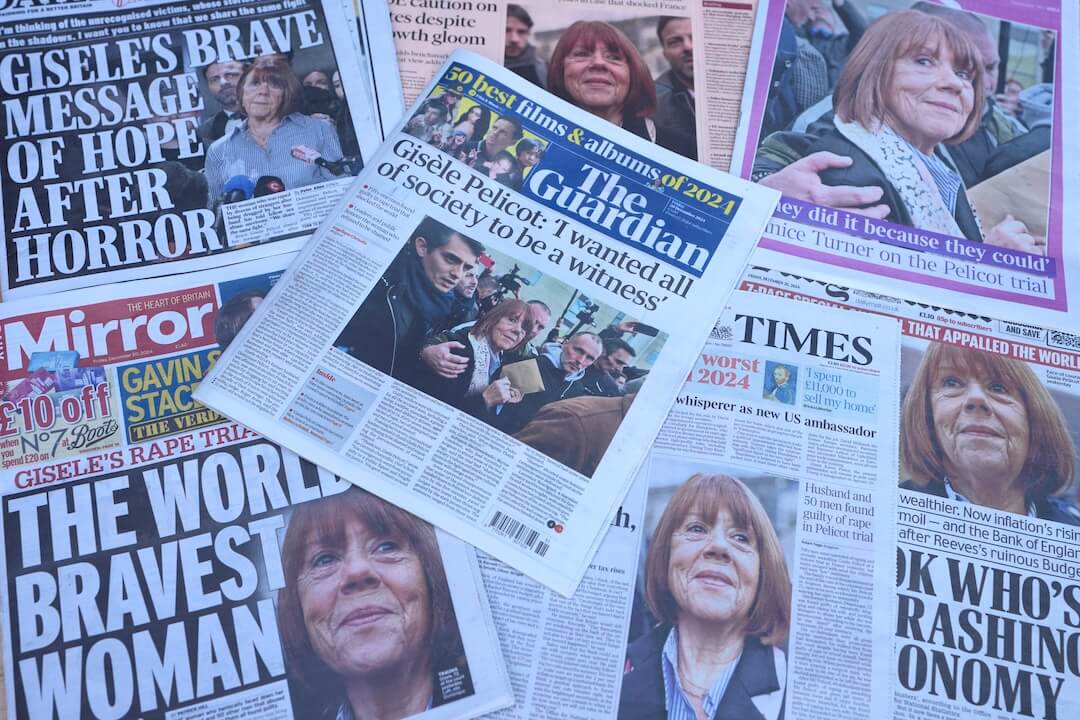“To retain respect for sausages and journalism, one must not watch them in the making.” With apologies to Otto von Bismarck.
Germany’s “Iron Chancellor” was talking about “sausages and laws” more than a century ago, but a modern-day revision sprang to mind Monday as I watched the Pentagon press corps in action at the daily Defense Department briefing.
The news focused on the war in Afghanistan and one closer to home, the battle over media access, as reporters and Defense Secretary Donald Rumsfeld sparred over last Friday’s leaks about special forces missions in Afghanistan.
But for journalists interested in sharpening their interviewing techniques the real story was in the questions rather than Rumsfeld’s answers.
The dictionary defines a question as, “a sentence in an interrogative form, addressed to someone in order to get information in reply.” Notice that the root of the word is quest, which is a “search or pursuit made in order to find or obtain something.”
“Questions are precise instruments,” says John Sawatsky, a Canadian journalist and teacher who knows how to ask questions that get rich answers. Used carefully, questions can make the difference between an answer and obfuscation.
Interviewing isn’t an art or a science, he says.
It’s something in between, closer to a social science. You can make some predictions about an interview but not absolute ones because interviewing involves human beings who don’t always behave in predictable ways. Ask the wrong question, and even a cooperative interview subject may not be able to give you the information you need.
The question is the interviewer’s most useful tool, but reporters ask too many questions (one-third to one-half, Sawatsky estimates) that suppress, rather than produce, information.
Watching portions of the live cable broadcast of Monday’s Defense briefing, and later studying the transcript posted by the Pentagon, I recognized at least three examples of the way questions can help or sabotage a reporter’s effort to collect information.
EXHIBIT 1: AIMING BOTH BARRELS, FIRING ON EMPTY
Q: Mr. Secretary, have you found out anything on how you respond to the charges from the Taliban that U.S. jets bombed a hospital near Herat, killing perhaps more than a hundred people? And adding to that, are U.S. forces now directly — directly — attacking Taliban forces protecting both Kabul and Mazar-e Sharif?
Undoubtedly, the reporter would like both questions answered. But by giving him two choices, what Sawatsky calls a “double-barreled” question, he’s just given Rumsfeld the option to pick and choose, which is what he does.
Rumsfeld: The Taliban have said they have shot down at least two helicopters, which is false. They have not. They have indicated that they have captured some Americans, which is false. They have not. And we have absolutely no evidence at all that would suggest that the allegation that you cited is correct.
The reporter aimed both barrels but only one fired. The result–a syntactical maze that amounts to a non-denial denial to Taliban charges that U.S. jets bombed a hospital. However, Rumsfeld was able to dodge the question about direct U.S. attacks on Taliban forces.
EXHIBIT 2: HOLDING UP A STOP SIGN
Sawatsky and other interviewing experts identify two basic categories of questions: questions that encourage conversation and questions that stifle it. Some interviewing experts refer to these types as open-ended and closed-ended.
The most effective are open-ended, encouraging the person you’re interviewing to respond fully. They are the opposite of closed-ended questions, which demand a brief, unequivocal response: “Yes,” “No,” “I don’t know” or “No comment.” I prefer the terms “conversation starters” and “conversation stoppers,” or “green light” and “red light,” because that’s what they can do. Whatever you call them, the one you choose to ask may end up suppressing rather than inviting answers.
Q: Mr. Secretary, two questions…one for you and one for General Myers, if I may. You came down a couple of weeks ago and you were rather incensed about classified information — leaks of classified information, and you sort of threw down the gauntlet in this building, saying that people would be sought out and punished. Are you now trying to find out who leaked the information as to Friday’s raids?
And to General Myers: Even though you’re not going to tell us specifically, you did give us a pretty good rundown on the Friday raids. Are commando-type raids ongoing, as we speak, in Afghanistan?
Secretary, the leaks?
Like the first example, this is a double-barreled, closed-ended question. It also anticipates the subject’s response.
Rumsfeld: As a matter of fact, I am too busy, then, to run around trying to find who did that. I don’t know if anyone is, to be perfectly honest. I’d certainly hope that the people who were parachuting in don’t find the person.
Myers: In terms of ongoing — perhaps ongoing ground action, we simply can’t talk about that right now. Like we said Saturday: Some things are going to be visible, some invisible. And I’m not going to get into the details.
The results of this exchange are puny.
Another telling sign of a question’s weakness: when the query is longer–107 words–than the 82-word answer.
By contrast, listen to what happens when a reporter asks an open-ended question.
EXHIBIT 3: A GREEN LIGHT FOR THE INTERVIEWEE
Q: General Myers, from a military-strategy point of view, what is the significance of the timing of moving now toward the Taliban fielded forces in those two areas?
Myers: Let me say first — I’ll talk about the timing in just a minute. But in a general way: This is not a linear war; this is not a sequential war. To think about this in terms of phases, as we have other conflicts — we’ve just got to clear our minds of that. We are fighting an enemy that uses asymmetric means, so we’re going to use all means available to us — some asymmetric, some very conventional. You saw that today on the clips.
We have a notion of things we would like to happen, but it’s not in the sequential sense or this linear sense that our brains tend to work in. We’ve been working this very hard, ourselves, to accommodate our thinking so we can be agile, more flexible in our responses. This is tough work, but don’t think about it in terms of phasing — in “once we’re done with the bombing campaign, now it’s the ground campaign” — that is not how this is going to go.
So, in that regard, it’s just simply as we said: Now we’re starting to work on some Taliban targets that are arrayed out in the field against folks that we would like to help. And that’s what we’re about.
Notice how a short question (27 words) invites and provokes a much longer (212 word) response. But it’s not just quantity; after all, some politicians and bureaucrats go on as if they were paid the word. Here the result is an answer that provides a nuanced, complete response that would help the reporter understand–and more effectively communicate to the public–the military’s mindset as it confronts a radically new type of war. It also has some punchy quotes. Unlike the two previous examples, Gen. Myers seemed interested in sharing the information he had.
Reporters are constantly in pursuit of the most timely, compelling and accurate information. Posed by a sincere, curious and open mind, the question is the most important tool you can use to reach that goal. Questions can be keys that open a door to a person’s life or beliefs. Or they can act as padlocks, barring you from discovering the information and stories you need to do your job.
Unfortunately, in all too many cases, interviews have become the street theater of news with both sides tacitly accepting their role. The reporters asks questions that may sound tough but provide subjects a variety of exit ramps while the subject pretends that they are responding when in fact they are using the dull question as a launching pad for their own agenda and rhetoric. The biggest loser in these kinds of exchanges, of course, is the public.
A Prescription for Healthier Questions:
Whenever possible, prepare questions in advance.
Ask open-ended questions. Questions that start with how, why, or what, or encourage a subject to describe, explain, and amplify have a better chance to provoke complete responses.
One at a time please.
Leave speeches to politicians, opinions to the editorial page.
Remember that the star of an interview should never be the interviewer.
Let the questions do the work.
Resist the impulse to editorialize (“You were rather incensed about classified information”) or anticipate the response (“Even though you’re not going to tell us specifically.”) Let the subject do the work.
Tape record your next interview and transcribe your questions. Compare them to Sawatasky’s dos and don’t in the AJR sidebars linked above. How many are double-barreled, closed-ended, editorials, arguments or statements of fact masked as questions?.
Become a student of the interview, good, bad and ugly. The ‘Net is loaded with transcripts:
- Transcript of Monday’s Defense Department briefing.
- White House press briefing archive.
- Defense Department press briefing archive.
- Transcript of Monday’s Defense Department briefing.






